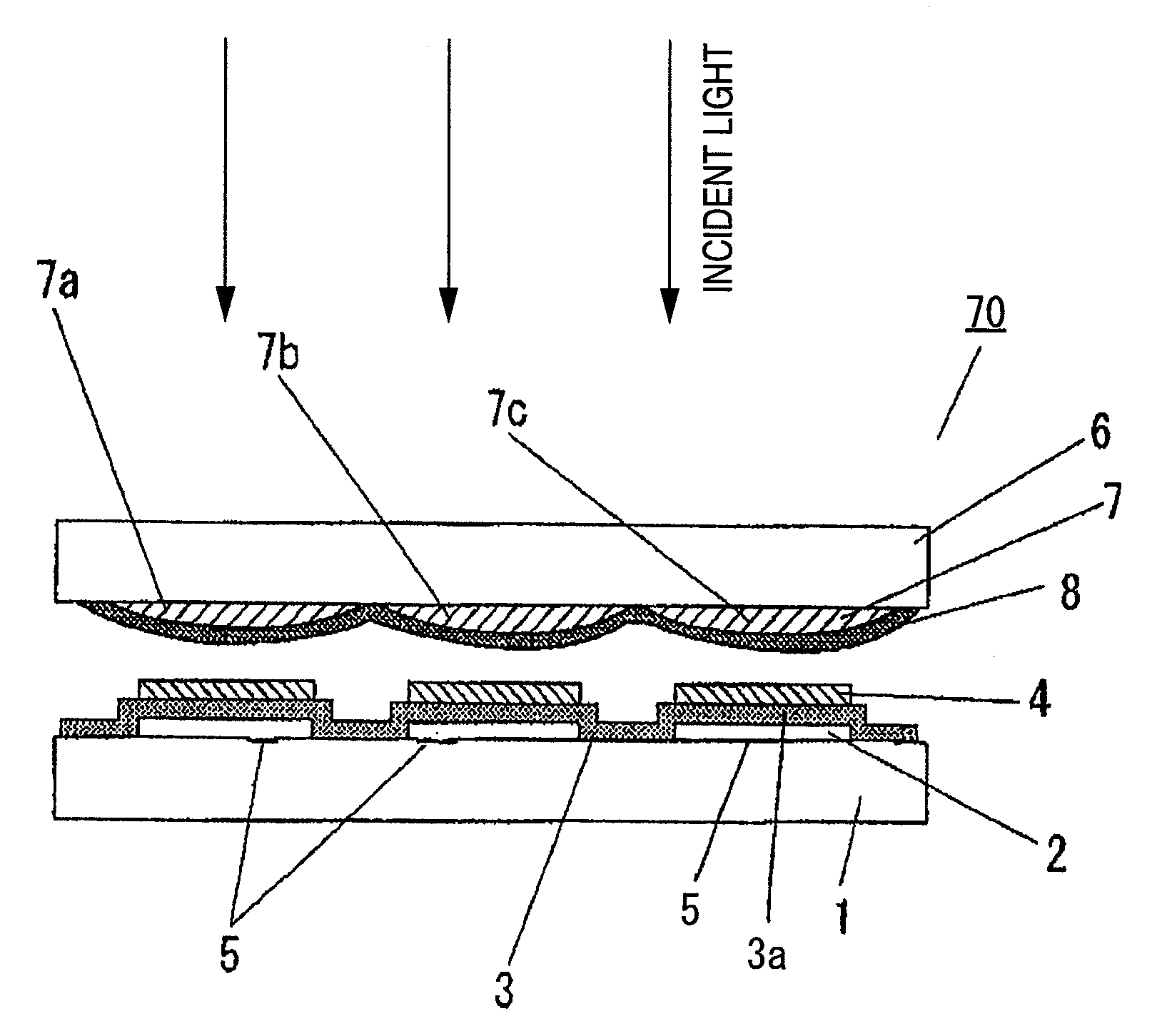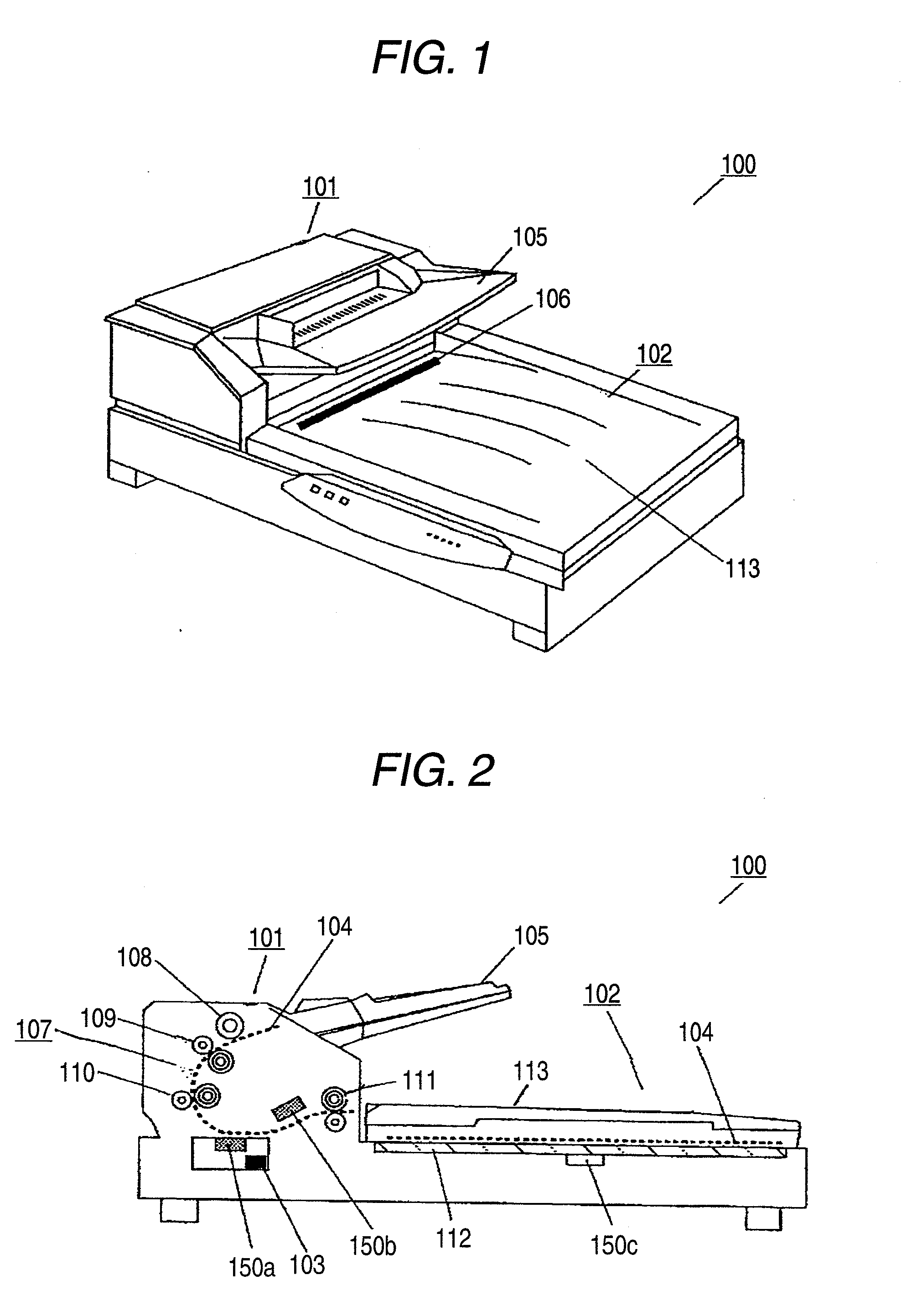Photoelectric conversion sensor
a technology of photoelectric conversion and sensor, which is applied in the direction of instruments, radiation controlled devices, optical radiation measurement, etc., can solve the problems of difficult to increase the size of the semiconductor substrate, difficult to reduce the cost, and large number of man-hours for the production of such photoelectric conversion pixels, so as to reduce the variation in thickness, reduce the height difference between the electrodes, and reduce the possibility of wire breakage on the substrate
- Summary
- Abstract
- Description
- Claims
- Application Information
AI Technical Summary
Benefits of technology
Problems solved by technology
Method used
Image
Examples
embodiment 1
[0035]A photoelectric conversion sensor, a photoelectric conversion unit or an image reader using the photoelectric conversion sensor or photoelectric conversion unit is applicable to a device, such as a facsimile or a scanner, for converting an image of a subject of imaging to an electric signal to obtain image data.
[0036]An image reader moves a photoelectric conversion unit and an original relatively from each other and creates image data based on an electric signal outputted from the photoelectric conversion unit while displacing the imaging position of an original. The image reader may be of a reflective type or a transmission type.
[0037]FIG. 1 is a perspective view showing the external appearance of an image reader according to Embodiment 1. FIG. 2 is a cross-sectional view showing the internal structure of the image reader according to Embodiment 1 and shows in this case a scanner as an example of image reader.
[0038]As shown in FIGS. 1 and 2, an image reader 100 reads the info...
embodiment 2
[0082]FIG. 5 is a cross-sectional view schematically showing a photoelectric conversion sensor according to Embodiment 2.
[0083]As shown in FIG. 5, a photoelectric conversion sensor 71 has a substrate 1 on which a plurality of organic photoelectric conversion pixel parts 5 are mounted and a light transmissive substrate 6 on which an optical filter 7 is mounted bonded together with a moisture-resistant resin 10. That is, FIG. 5 shows the moisture-resistant resin 10 as an example of a support member according to Embodiment 1.
[0084]The moisture-resistant resin 10 is formed so as to be bonded to the substrate 1 outside an area in a plan view where the plurality of organic photoelectric conversion pixel parts 5 are arranged and so as to be bonded to the light transmissive substrate 6 outside an area in plan view where the optical filter 7 is arranged. The moisture-resistant resin layer 10 bonds together the substrate 1 and the light transmissive substrate 6 (refer to FIGS. 11 and 12 below...
embodiment 3
[0092]FIG. 6 is a cross-sectional view schematically showing a photoelectric conversion sensor according to Embodiment 2.
[0093]In a photoelectric conversion sensor 72 shown in FIG. 6, a moisture-resistant resin layer 10a is formed so as to cover each organic photoelectric conversion pixel part 5 and the moisture-resistant resin layer 10a is used to bond together a substrate 1 and a light transmissive substrate 6. The moisture-resistant resin layer 10a has light transmission properties.
[0094]The photoelectric conversion sensor 72 having such a structure delivers the same technical effects as the photoelectric conversion sensor 71 described in Embodiment 2 and is more advantageous in that it is made easy to form the moisture-resistant resin layer 10a.
[0095]Same as the moisture-resistant resin layer 10 described in Embodiment 2, the moisture-resistant resin layer 10a may be formed by a photo-setting or thermosetting resin. Extreme care should be taken to prevent degradation or destruc...
PUM
 Login to View More
Login to View More Abstract
Description
Claims
Application Information
 Login to View More
Login to View More - R&D
- Intellectual Property
- Life Sciences
- Materials
- Tech Scout
- Unparalleled Data Quality
- Higher Quality Content
- 60% Fewer Hallucinations
Browse by: Latest US Patents, China's latest patents, Technical Efficacy Thesaurus, Application Domain, Technology Topic, Popular Technical Reports.
© 2025 PatSnap. All rights reserved.Legal|Privacy policy|Modern Slavery Act Transparency Statement|Sitemap|About US| Contact US: help@patsnap.com



